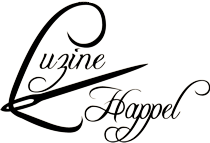Filling Patterns of Section 3 II
The divided flowers receive a thread withdrawing of 3:1.
They are decorated with a pattern of alternating rows of Satin stitches and backsided Four-sided stitches using coton à broder Nr. 20.
For the large heart, the thread eithdrawing is made 2:2; The resulting grid is secured with Cable stitches (coton à broder No. 30).
The Rose stitch pattern No. 575 is embroidered into the openwork grid with coton à broder No. 20.
The small pomegranates do not receive any thread withdrawing. The outer parts are Chain stitched (coton à broder No. 30) along the outer edge.
On the inner edges, eyelash stitches are added (coton à broder No. 20) along the Coral Knot stitches.
The middle parts of the small pomegranates are finished with irregularly spaced French Knot stitches, each with 3 wraps (coton à broder No. 20).
This means that Section 3 II also received its filling patterns.
Schwalm Band – Outline Design
Schwalm Band (1) Design Transfer
Schwalm Band (2) – Preparatory work of section 5
Schwalm Band (3) – Preparatory work of section 4
Schwalm Band (4) – Preparatory work of the sections 3 – 1
Schwalm Band (5) – Filling Patterns of Section 5 II
Schwalm Band (6) – Filling Patterns of Section 5 I
Schwalm Band (7) – Filling Patterns of Section 4 b II
Schwalm Band (8) – Filling Patterns of Section 4 b I
Schwalm Band (9) – Filling Patterns of Section 4 a II
Schwalm Band (10) – Filling Patterns of Section 4 a I














































